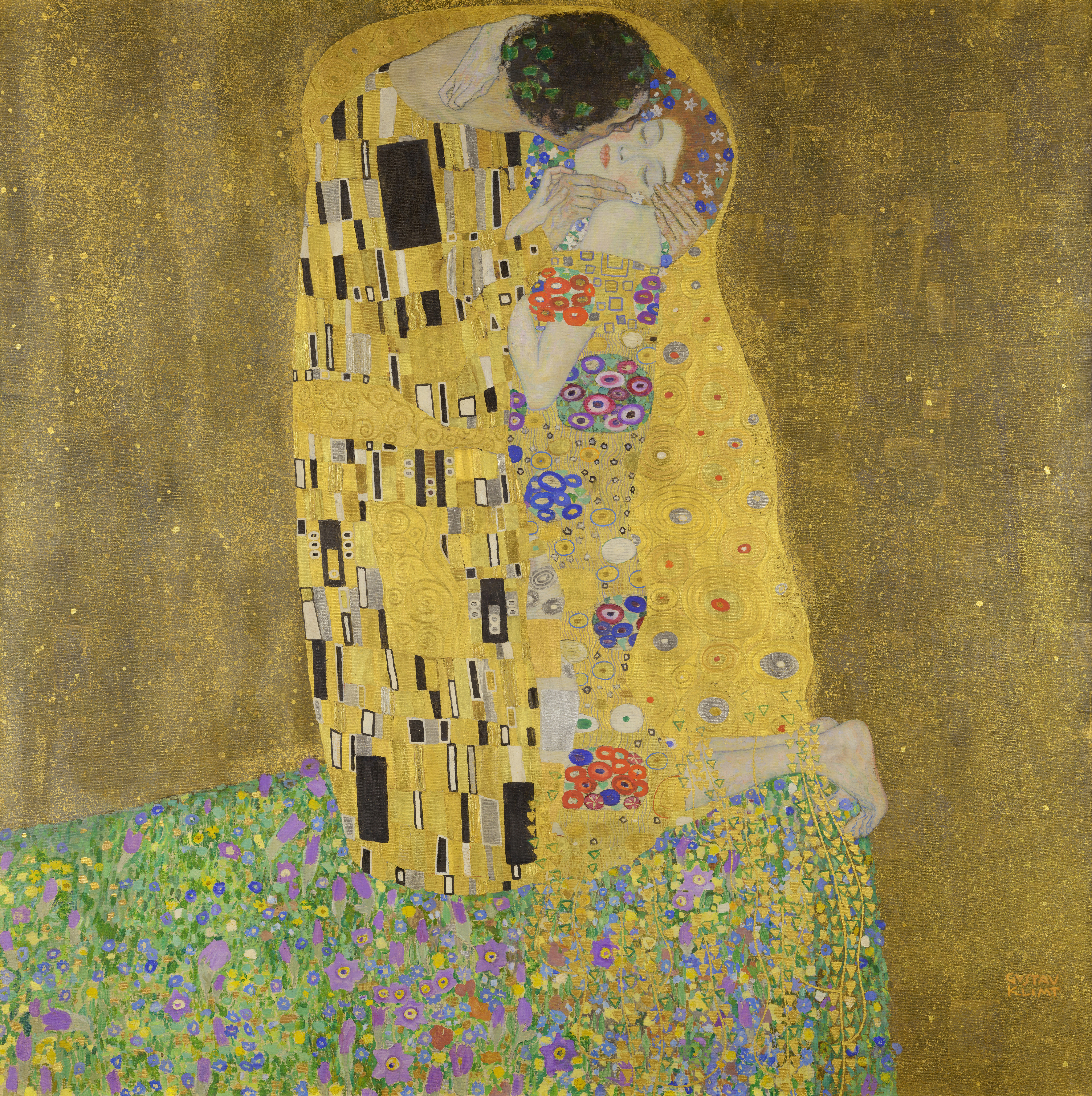
The Kiss (on the right) is one of the most frequent pictures in student rooms. Female students that is. The gold, the flowers, the gently undulating figure of a red-haired and pink woman being embraced and kissed by an angular and darker man – what’s not to like?
But the early 20th-century Austrian painter Gustav Klimt wasn’t always a crowd pleaser. In 1899 he won a commission for three paintings for the ceiling of the University of Vienna’s Great Hall. But his depictions of the goddesses of Philosophy, Medicine, and Jurisprudence caused an uproar of university establishment and were never displayed. They were later looted by Nazis and destroyed in by the fire in 1945, so we have only a fragment in colour and black-and-white reproductions of the rest.
Even from the ghost of the paintings, we can see that Klimt combined his strands of his cash-cow ornate female portraits with his post-Great Hall allegorical groups, as in “award-winning” Death and Life. (If you are ever in Vienna, do visit Leopold Museum for Klimt’s works if nothing else. “Death and Life” is mesmerizing, it’s 2m x 2m but feels like five times that.)
Why were his Great Hall paintings called ‘pornography’ and ‘perverted excess”? Not because the educated people at the end of the 19th century didn’t see nude figures on paintings. On the contrary, classical paintings of this period were full of nudes – relaxing in languorous poses, plump and pink. Klimt’s nudes are emaciated, twisted – and have visible pubic hair and genitals, hence pornography accusation. They also don’t suffer heroically as the heroes of classical paintings do, but depicted being in despair, viscerally – “in excess”.
Continue reading